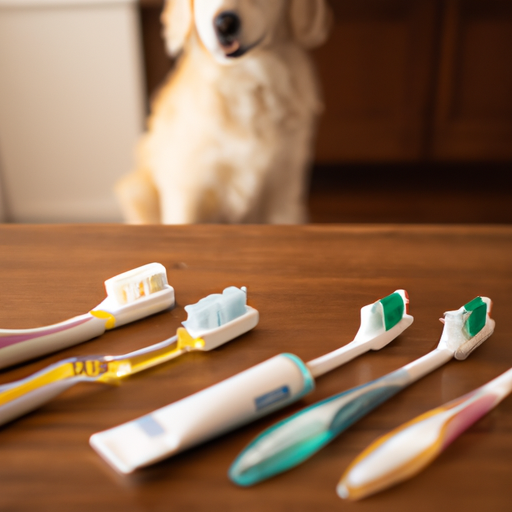Maintaining your furry friend’s dental hygiene is just as important as taking care of your own. Regular brushing can prevent a plethora of health problems and keep your dog’s mouth fresh and clean. Consider this your ultimate guide to brushing your dog’s teeth.
Why You Should Brush Your Dog’s Teeth
Your pet can’t tell you when their gums are sore or they’re having tooth pain. Regular brushing can help prevent these issues before they become a problem. Besides preventing bad breath, regular brushing can also help prevent:
- Tooth decay
- Gum disease
- Painful infections
- Loss of teeth
Moreover, poor dental hygiene can lead to more serious health issues like heart and kidney disease.
Choosing the Right Products
When it comes to brushing your dog’s teeth, it’s crucial to choose the right products. Using human toothpaste can be toxic for dogs, so you should always choose a toothpaste designed specifically for dogs.
Dog toothpaste is available in various flavors, such as:
- Chicken
- Beef
- Peanut butter
- Vanilla mint
You also need a toothbrush designed to reach every part of your dog’s mouth. There are several options available, including:
- Finger brushes
- Dual-headed brushes
- Toothbrushes shaped like toys
The Brushing Process
Brushing your dog’s teeth doesn’t have to be a stressful process. Here’s a step-by-step guide to make it as smooth as possible:
- Choose a calm and quiet environment.
- Let your dog taste the toothpaste first.
- Lift your dog’s lip to expose their teeth and gums.
- Start brushing with gentle motions.
- Brush the outside surfaces of your dog’s teeth and gums.
- Reward your dog with praise and a treat.
Remember, the goal is to make tooth brushing a positive experience for your dog. Never force it if they seem distressed or uncomfortable.
Alternatives to Brushing
Brushing is the gold standard for maintaining your dog’s oral health. However, if your dog absolutely refuses to tolerate it, there are other options:
- Dental chews and toys
- Dental diets
- Oral rinses
- Professional cleanings
While these alternatives can help, they shouldn’t replace brushing entirely. Always consult with your vet to create the best dental care plan for your dog.
FAQ
Q: How often should I brush my dog’s teeth?
A: Ideally, you should brush your dog’s teeth daily. However, brushing several times a week can still be beneficial.
Q: Can I use human toothpaste for my dog?
A: No. Human toothpaste can be toxic to dogs. Always use a dog-specific toothpaste.
Q: What if my dog doesn’t like having their teeth brushed?
A: Start slow and make the experience positive. If your dog still refuses, consider alternatives and consult with your vet.
Q: My dog’s breath smells really bad. Is that normal?
A: While dogs don’t have the freshest breath, extremely bad breath could be a sign of dental disease. It’s best to consult with your vet.
Q: At what age should I start brushing my dog’s teeth?
A: The sooner, the better. Start when your dog is a puppy if you can.
Remember, maintaining your dog’s dental health can prolong their life and keep them healthy. With some patience and persistence, brushing your dog’s teeth can become a simple part of your routine.



